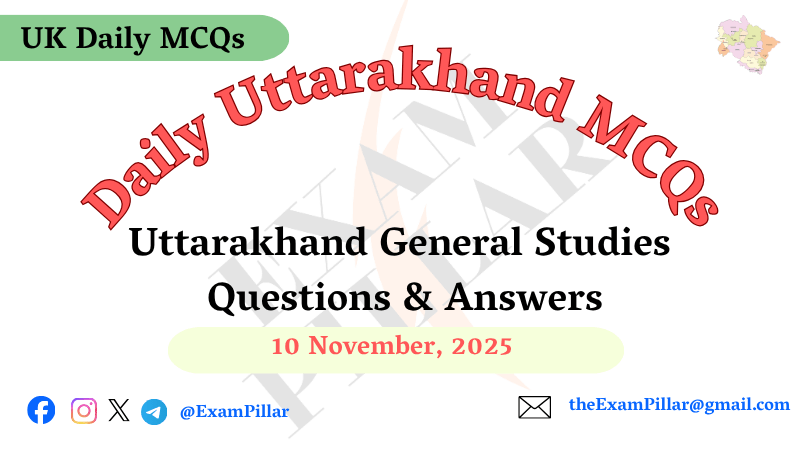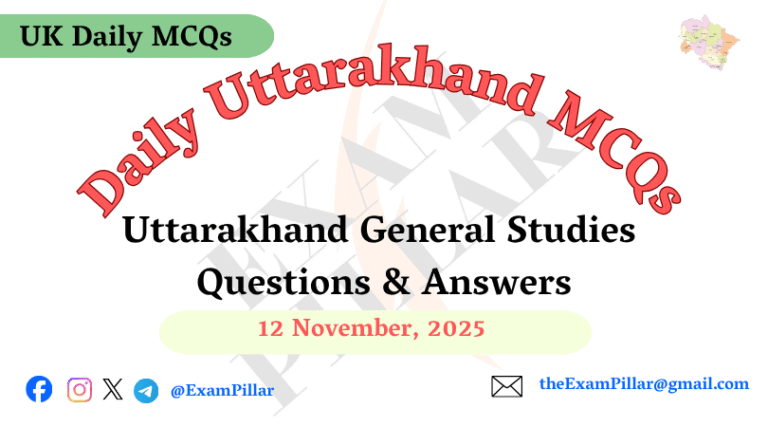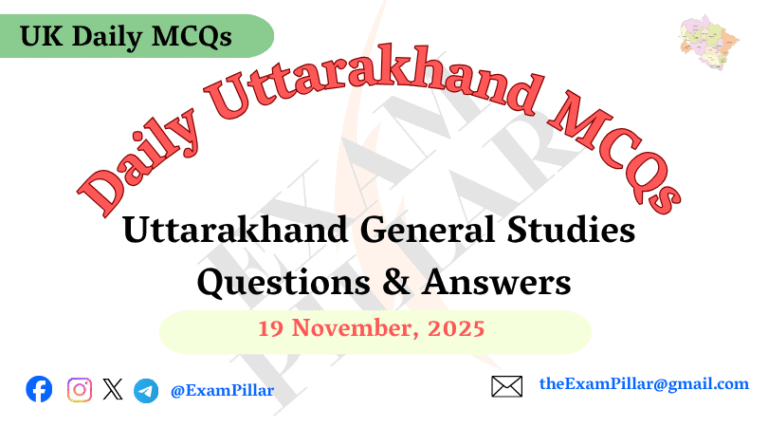The Exam Pillar brings you the Daily MCQs program for examinations conducted by the Uttarakhand Public Service Commission (UKPSC) and the Uttarakhand Subordinate Services Selection Commission (UKSSSC). This program provides candidates with objective study materials tailored to the exam format of the Uttarakhand Public Service Commission and the Uttarakhand Subordinate Services Selection Commission.
Daily UKPSC / UKSSSC MCQs : Uttarakhand
10 November, 2025
Q1. In which valley did the Bhotantik or Shauka tribe reside?
(A) Gomti Valley
(B) Kali River Valley
(C) Alaknanda Valley
(D) Yamuna Valley
Click To Show Answer/Hide
Explanation: The Bhotantik or Shauka tribe lived in the valleys of the Kali River. This community was primarily engaged in trade and served as a link between North India and Tibet. Their lifestyle was deeply connected to the mountainous and borderland environment in which they lived.
Q2. According to Rahul Sankrityayan, the Shaka tribe was a derivative of which tribe?
(A) Naga tribe
(B) Kirata tribe
(C) Khasa tribe
(D) Kol tribe
Click To Show Answer/Hide
Explanation: Scholar Rahul Sankrityayan believed that the Shaka tribe was actually a derivative of the Khasa tribe. This means that the Shakas and Khasas shared cultural and linguistic similarities, suggesting they might have had a common origin.
Q3. In Uttarakhand, where have evidences of the Shaka tribe been primarily found?
(A) In Shiva temples
(B) In Vishnu temples
(C) In Sun temples
(D) In Goddess temples
Click To Show Answer/Hide
Explanation: Most evidences of the Shaka tribe in Uttarakhand have been found in Sun temples. This indicates that the Shakas were sun-worshippers and that the Sun God was the central focus of their devotion. Sun worship was likely an important part of their religious and cultural life.
Q4. Until when did the Bhotia people trade with Tibet?
(A) Till 1914 CE
(B) Till 1947 CE
(C) Till 1962 CE
(D) Till 1971 CE
Click To Show Answer/Hide
Explanation: The Bhotia people continued trading with Tibet until 1962 CE. This trade was dependent on the open border between India and China, which was closed after the Sino-Indian War of 1962. The closure had a significant impact on the traditional economic system of the Bhotias.
Q5. In the 1914 agreement between Tibet and the British, which tribe was granted trading rights?
(A) Naga tribe
(B) Motia tribe
(C) Bhotia tribe
(D) Shauka tribe
Click To Show Answer/Hide
Explanation: Under the 1914 agreement between Tibet and the British, the Bhotia tribe was granted the right to trade with Tibet. This agreement was an important event in the history of India–Tibet trade relations.





Leave a Reply